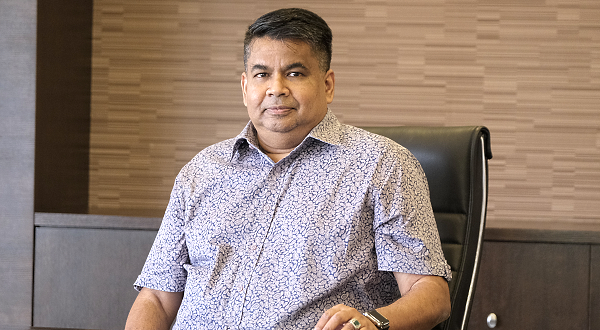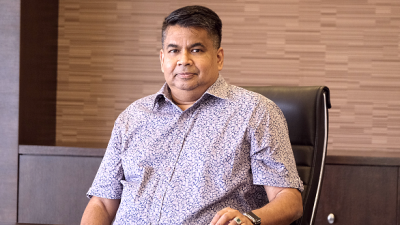
Arable land is defined by the United Nations Food and Agriculture Organisation (FAO) as land currently used, or potentially capable of being used, to grow seasonal crops.
This definition excludes land used for pasturing, for tree-farming (or “silviculture”), or for more durable agricultural products such as vineyards, orchards, and coffee and rubber plantations.
In turn, non-arable land can sometimes be made arable, for example by removing forests or tilling pasture land. Some land, such as mountains, tundra, or desert, is permanently non-arable.
The word “arable” comes from the Latin word arabilis, meaning “able to be ploughed.”
In light of the increasing food prices faced by Malaysia, if not the read of the world, due to a combination of hoarding, the war between Russia and Ukraine, where Russia is ranked number two in terms of the size of the most number of able land after India, while Ukraine is number ten, any seismic events in this region are bound to impose an enormous pressures on the whole world, on top of a pandemic that has gone endemic, where the endemicity, where more and more cases can suddenly spike from more human to human sub variants of the Sars Cov II virus that causes Covid-19, the challenges facing Malaysia are gargantuan to say the least. Why?
60 percent of Malaysia’s food is imported. In 2020, the country imported RM55.4 billion (US$12.67 billion) of foodstuffs. When one factors in the fact that US$1 is now almost RM 4.40, Malaysia will suffer an economic compression.
The country, for example, is dependent on imports for 88.8 percent of mutton and 76.4 percent of its beef, which are mostly buffaloes imported from India. While Malaysia was once self-sufficient in poultry too.
A roaster chicken wing at the road side is between US$0.95 cent as of last week and in some places US$1.00. Be that as it may, Malaysia is now importing chicken to fill the void in the market due to the closure of many poultry farms.
More imports imply more outflow of ringgit Malaysia, causing it to weaken further, as indeed against all currencies especially US.
Yet, according to Asia Sentinel last week, “Many institutional issues prevent any increase in production. Most of the primary sector, led by Government Linked Companies (GLCs) and other politically connected companies have traditionally focused on the production of commodity crops rather than food.”
According to the minister of agriculture and food industries Dr. Ronald Kiandee, the targeted source countries were Thailand, China, and Brazil, even though prices from these three countries were higher than sources from other countries, according to industry sources.
The three countries, however, have their own problems, leading to rising prices.
Thailand is currently facing an African Swine Fever outbreak which has led to a sudden rise in the demand for chicken. China is currently a net importer. Brazil is also a questionable source, as meat and chicken exports have been banned from most Middle Eastern destinations due to questions over halal integrity.
The high price of Thai-produced chicken was publicly acknowledged by the director-general of the Department of Veterinary Services (DVS), Dr. Norlizan Mohd Noor, the officer responsible for issuing APs for importing chicken into Malaysia. But the problem is deeper than what been described.
Malaysia, for example, has long been a victim of success in palm oil, crowding out food production.
With the price of palm oil at more than US$6,653 per tonne, with Indonesia banning the export of its palm oil this year, in order to alleviate the inflationary effects that a domestic shortage of palm oil has caused the cost of vegetable to creep up, leading to various demonstrations, President Joko Widodo has had to to clamp down any further exports, even if Indonesia is losing US$3 billion a month in foreign revenues.
Even though the Malaysian Ministry of Agriculture and Food Industries (MAFI) has launched a number of capacity development programs like the Young Agropreneur Program and My Future Agro, the image of farming as a vocation for locals is very low.
Particularly among Malays, farming is seen as being not to glamorous. Most have been conditioned to aspire to work in the banking or government service. This is in great contrast to neighbouring Thailand, where many small holders are degree holders in agriculture and business, operating their farms as businesses.
Individual state governments are doing very little to allocate land to those in need of food production.
Currently, 103,563 hectares of farmland are abandoned, making up 46,382 lots in 2019 that couldn’t be utilised due to ownership issues. This doesn’t include idle or unused land in the hands of the government.
Land tenure and rising rents in farming areas like the Cameron Highlands in the mountains above Kuala Lumpur are major issues. Farmers across the country are being evicted by state land offices to make way for corporations, while vegetable cartels run protection rackets.
Politically connected companies are taking over the poultry industry, turning it into a cartel. The use of foreign labour, with millions of undocumented aliens, is a major scandal that appears to be controlled by a highly connected politician.
Ukraine, in peacetime, is responsible for 12% of the world’s wheat.
The ingredients that are needed to create fertilisers are nitrate, potassium, and ironically, CO2 (carbon dioxide), of which the latter is needed for the packaging/packing of the fertilisers.
The rise in the price of fertilisers is a global phenomenon. It hits the US just as badly as it affects the United Kingdom and the whole of Europe, even Africa.
As of May 6, the price of fertilisers per tonne in the UK has rose from £650 to £1,000. The U.S., the whole of Europe, Africa, Asia and Latin America are all witnessing the same rise in the cost of production.
Indeed, this is a rise in a matter of two months, triggered by a war that was caused by the Russian military operation in Ukraine on February 24, 2022.
Since the war is not over, and President Joe Biden has declared the likes of Putin cannot be a partner whom he can work with, both on and off the mike, with Russia unable to control any new cities in Ukraine except Kherson, Russia is determined to conquer Port Mariupol.
As of May 17, it has slowly succeeded to establish a land corridor from Donbask and Ruhansk which it has subjugated to its control since 2008, to make Port Mariupol and Crimea under Kremlin’s sphere of influence.
But the US, EU and 30 members of the North Atlantic Treaty Organisation (NATO) refused to relent. Allowing Putin to control this area is to allow him to control the price of European food production and consumption forever.
Indeed, even Israel and the Arab world import 40-50 per cent of their food from Ukraine, as Ukraine is famous for the high quality of its mineral rich “black soil”.
What can Malaysia do then?
In Europe, farmers said they were likely to offset the price rises by buying less fertiliser than usual this season for cereal crops, potentially leading to lower production at a time when there is a threat to supplies from Ukraine. The agricultural inflation in Europe is real.
Although Asians don’t consume so much wheat, oatmeal, barley, cereals and corn, these are the things which Malaysia does import in the form of animal feed.
Therefore, Malaysian producers and consumers will also face imported agricultural and fertiliser inflation.
Some farmers in Europe may try to use more organic fertilisers by partnering with livestock producers (that produce animal feed) or those running anaerobic digesters, which make energy from organic matter, to try to offset the cost of high fertilisers, but what ever Europe does, even Africa, they are producing everything on the back of higher fertiliser and organic fertiliser costs, explained World Bank.
In Malaysia, with a weak national economy, that is also marked by an increasingly wild and turbulent weather, as marked by more than 2500 mm of rain between December 15 and 18, 2021 alone – equalling the entire annual rainfall of 2020 – Malaysian farmers may not have the risk appetite to plant more at all. This is because the risk of being hit by severely bad weather is now higher than ever. One wild weather can wipe out the entire production.
The Malaysian farmers will also plant less, and make less fertilisers, even if the prices of fertilisers appear to be on an uptick.
Thus, when the supply of fertilisers and food production is more and more acute/severe locally, then one has the classic situation of too much money chasing too few goods, a problem that leads to imported inflation.
The latter is happening because Malaysia has overemphasised the importance of industrial production, such as building a national car, rather than ensuring a stable supply of locally produced food and livestock.
Hence, the dire need for a comprehensive food security policy NOW!
(Dr. Rais Hussin is the President/CEO of EMIR Research, an independent think tank focused on strategic policy recommendations based on rigorous research.)
ADVERTISEMENT
ADVERTISEMENT






































